What is a Dislocated shoulder?
A dislocated shoulder occurs when the upper arm bone (humerus) slips out of its socket (glenoid) in the shoulder blade (scapula). This displacement disrupts the normal alignment of the shoulder joint, causing pain, instability, and limited range of motion.
What are the symptoms?
Symptoms of a dislocated shoulder may include:
- Severe pain in the shoulder area, exacerbated by movement.
- Swelling, bruising, or deformity around the shoulder joint.
- Inability to move the arm or shoulder normally.
- Numbness or tingling sensation down the arm.
- Visible protrusion or abnormal shape of the shoulder.
What causes a Dislocated shoulder?
Dislocated shoulders can result from various factors, including:
- Traumatic injury, such as a fall, sports-related collision, or motor vehicle accident.
- Forceful twisting or wrenching of the arm, particularly when the arm is extended or abducted.
- Degenerative changes in the shoulder joint, such as arthritis or laxity of the ligaments, increasing the risk of instability.
- Repetitive overhead activities or lifting heavy objects, leading to gradual wear and tear of the shoulder structures.
What are the treatment options?
Treatment options for a dislocated shoulder may include:
- Closed reduction: Manual manipulation of the displaced shoulder joint to realign the humerus with the glenoid socket, often performed under anaesthesia in the emergency room or clinic setting.
- Immobilization: After reduction, the shoulder may be immobilized with a sling or shoulder immobilizer to allow for healing and prevent further dislocation.
- Physical therapy: Rehabilitation exercises to strengthen the muscles surrounding the shoulder joint, improve stability, and restore range of motion.
- Pain management: Over-the-counter or prescription medications to alleviate pain and inflammation.
What does surgery involve?
In some cases, surgery may be necessary to repair damaged ligaments or structures within the shoulder joint and reduce the risk of recurrent dislocations. Surgical procedures for a dislocated shoulder may include:
- Bankart repair: Surgical reconstruction of the torn labrum (cartilage) and ligaments in the shoulder joint to stabilize the joint and prevent future dislocations.
- Capsular shift: Tightening of the stretched or torn shoulder capsule to improve stability and reduce the risk of recurrent dislocations.
- Latarjet procedure: Transfer of a piece of bone from the shoulder blade to the front of the shoulder socket to create a bony block, preventing the humerus from dislocating.
What does the recovery process include?
Recovery from surgical intervention for a dislocated shoulder varies depending on the specific procedure performed and individual factors. Generally, recovery may involve:
- Immobilisation with a sling or shoulder brace immediately after surgery.
- Physical therapy or rehabilitation exercises to restore strength, mobility, and function of the shoulder joint.
- Gradual return to activities and sports, following the guidance of your healthcare provider.




